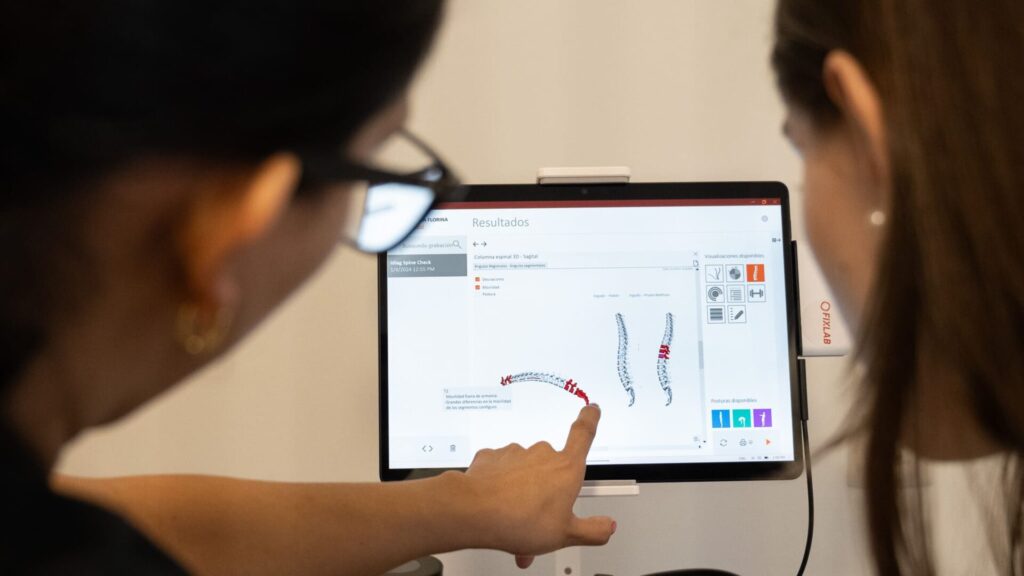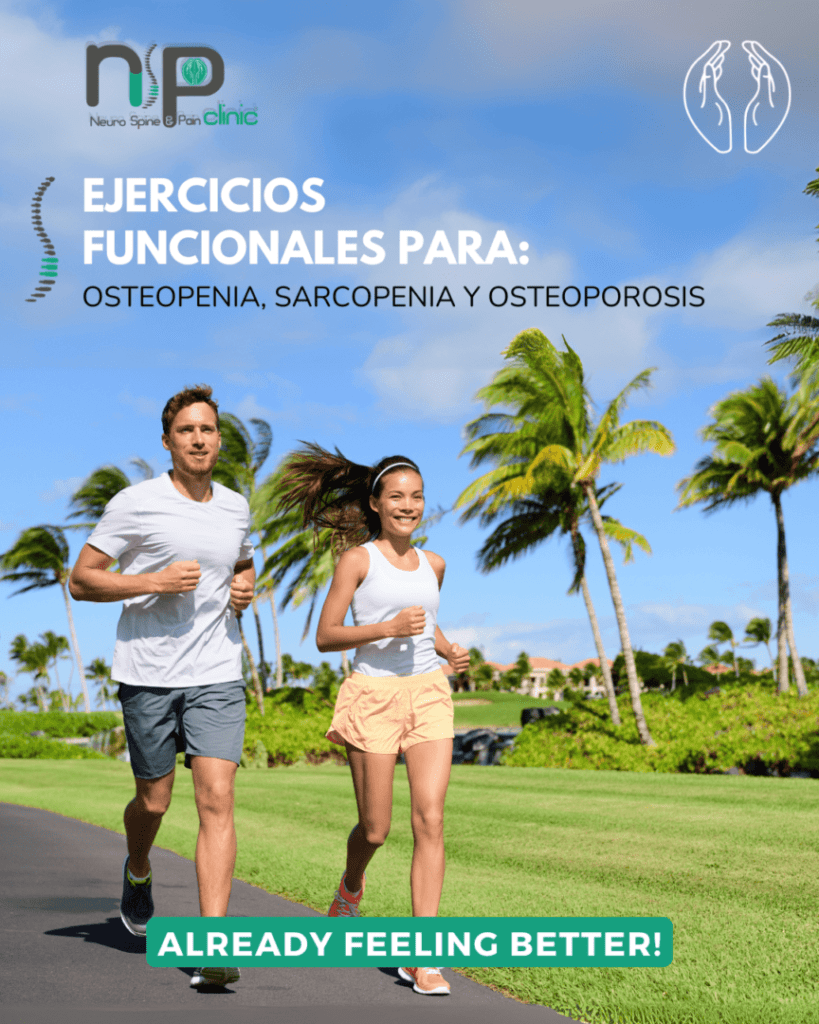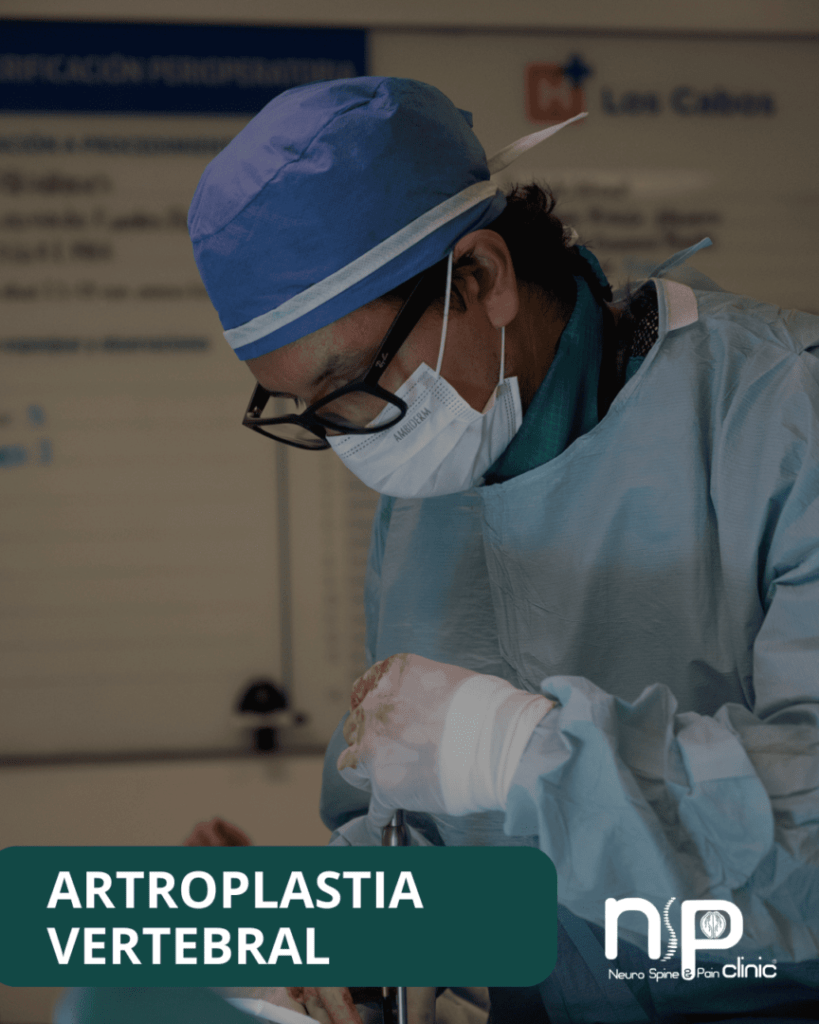IDIAG M360 is a computer-aided medical device that can be used to determine the shape and mobility of the spine by simply sliding the device manually across the back.
From the surface shape, an intelligent recursive algorithm calculates information regarding the relative position of the vertebral bodies of the thoracic and lumbar spine, taking into account the local curvature (kyphotic or lordotic).
As a final result, a precise segmental location of all the vertebral bodies is obtained as the projection of their midpoints on the superficial contour of the back.
The Idiag M360 uses the large wheel to measure the length from the 7th cervical vertebra (C7) to the 3rd sacral vertebra (S3). It is an advanced electronic device designed to determine the shape and mobility of the sagittal and frontal back. Compared to other known methods, Idiag is unique in terms of precision, objectivity and presentation of the data obtained. Spine analysis is simple, fast and accurate. However, the most important advantage lies in the non-invasive and radiation-free procedure, which significantly increases ease for the patient and the user.
It is guided by hand along the patient's spine, with the sensor independently following the contour of the back. Using a reliable and scientifically proven calculation method, the following clinically relevant parameters are calculated:

● Posture and mobility in the sagittal and frontal plane
● Mobility and position of each vertebral segment
● Hypo and hypermobility
● Postural competence and postural insufficiency
● Pelvic position
● Back length
● Progression of scoliosis
The Idiag M360 data is characterized by its high validity and reliability. There is a wide range of possible applications for posture and mobility assessment. Thanks to its unique ability to collectively record criteria and therefore define physiological and disease-specific normative values, it is extremely valuable for scientific questions. The ergonomic and user-friendly design allows for good guidance along the spinal column. and guarantees reliable results. The data is transmitted to the PC via Bluetooth and evaluated by the supplied software.
In what aspects can the IDIAG M360 be used?
Medical analysis
1.- Individual exploration of the back without radiation for targeted therapies.
2.- Optimization of the response to treatment and risk reduction.
3.- Functional diagnosis complementary to the radiological examination.
Therapy monitoring
1.- Information for the patient in the form of simple and easily understandable graphics.
2.- Exact information on the geometry of the spinal column for documentation of the
treatment success.
Prevention
1.- Identification of possible anomalies through a well-founded analysis of posture,
muscle mobility and stability.
2.- Generation of relevant clinical information for the development of effective therapies.
Training Guidance
8.- Visualization of problem areas and clear identification of objectives and
training results.
9.- Increased motivation and improved results.
Who is the IDIAG M360 suitable for?
1.- Natural medicine
2.- Physical and rehabilitation medicine
3.- Physiotherapy
4.- Orthopedics
5.- Neurosurgery
6.- Preventive medicine
7.- Sports medicine
8.- School and industrial medicine
9.- Ergonomics, occupational medicine.10. Osteopathy
What type of information do we obtain from a measurement with IDAG M360?
We obtain important clinical information that is needed and that can be used by the doctor and therapist to formulate the best treatment, therapy or overall care plan for the patient, and to accurately measure the results of any treatment or intervention.
Some of the information or clinical data are:
• Posture (sagittal and frontal shape of the spine)
• Mobility, range of motion (ROM)
• Spine stability (postural competence)
• Indications for non-harmonic curvature (posture):
• Indications for non-harmonic mobility (ROM):
Based on expert interpretation of measured data, IDIAG M360 can
recommend exercise interventions for therapy and/or training program.
Difference between IDIAG M360 and other diagnostic methods
There are many reasons why and why the IDIAG M360 is different. Mainly, IDIAG M360 stands out for an accurate, simple, fast and cost-effective measurement procedure; Its evaluator-independent validity and reproducibility are very high; and does not use radiation or chemicals, allowing SpinalMouse to be free of contraindications or side effects.

Advantages of using IDIAG M360
A back patient can obtain quick, valid and reliable information about the shape and mobility of the spine in an easy-to-understand format. This leads to a much greater degree of patient cooperation, commitment and compliance with interventions, treatment or therapeutic regimens. Additionally, IDIAG M360 has the ability to compare a previous IDIAG M360 scan or series with a current one, and this allows useful quality control information to be obtained, while providing an accurate means of evaluating the effectiveness of any rehabilitation program or therapy by checking the progress of the individual patient.
Efficient progress tracking
You can process any number of exams with respect to each patient. During the process, these are vividly presented and changes are visible in the results table as well as graphical evaluations.
Automated exercise recommendations: From the results of the examination, the software generates a training program to address the anomalies that were discovered. The therapist can modify and adapt it individually as necessary.
The standard postures
Upright posture:
The distance between the feet is approximately hip height, the body weight is distributed evenly between both feet, the arms hang relaxed at the sides of the body and the horizontal view is in a straight line.
Push-up posture:
The upper part of the body is tilted forward and down as much as possible, the head and arms hang relaxed, the distance between the feet remains approximately hip-width apart.
Extension posture:
The patient crosses his arms over his chest, brings the trunk back as much as possible, there is no forward movement of the hips, the distance between the feet remains approximately at the height of the hips, and the knees are straight.
Matthiass test
A defined load triggers a change in upper body posture, which can be determined objectively using Idiag M360 recording. The evaluation of a possible postural weakness is based on the extent and location of the postural change from standing under a load, holding the arms raised for 30 seconds.
The appropriate additional weights are determined for each patient, the patient adopts the usual upright posture and takes the additional weights in his hands, the distance between the feet is approximately hip height, the patient raises his arms extended to the height of the shoulders (90°), the patient remains in this position until the end of the 2nd recording.
Indications
● Non-specific low back pain and pain diagnosed as “lumbalgia”
● Sacroiliac joint dysfunctions
Nonspecific low back pain is often caused by muscle weakness.
Contraindications
It should not be used in patients to whom one or more of the following conditions apply:
●Open wounds and tissue injuries in the area of the spine between C7 and S3.● Irritated, inflamed or infected areas of tissue in the area of the spine C7 and S3.
To determine the flexion or extension posture, it must be clarified in advance whether the patient can perform maximum forward or backward flexion for about one minute for health reasons. If pain occurs, the patient should not lean forward or backward.
The list is not exclusive, the decision as to whether a patient is suitable for treatment is at the discretion of the treating physician.
Side effects
Idiag has chosen the materials that come into contact with the patient with the utmost care. Only biocompatible materials are used, which have been extensively tested for use for medical purposes and are constantly monitored by manufacturers.
New patients, in particular, should be examined regularly for possible skin irritations and signs of allergic reactions. In such cases, treatment should not be continued under any circumstances.
Risk factor's
The decision as to whether a patient is suitable for treatment is at the discretion of the treating physician, who is solely responsible for the treatment. In each individual case, the doctor must suspect the possible risks and side effects of the treatment compared to the benefits it derives.
The individual patient situation plays such an important role with the overall risk assessment for certain patient groups.
●Serious accidents (whiplash) without prior consultation with a doctor
●Chondromalacia of the facets
●Acute hernia (spinal and abdominal)
●Neurological impairment (including spinal cord or cauda equina compression or nerve root compression)
●Severe balance disorders
●Spondylosis in the sacral area
Scientific findings
The validity, reliability and objectivity of the Idiag M360 were evaluated in several studies, including a comparison with functional X-ray imaging, considered the gold standard. A significant correlation could be demonstrated between functional X-ray images and Idiag M360 images of position (r=0.97) and mobility (r=0.82). Consequently, the use of Idiag M360 with an accuracy of ±1.96° is a good option and radiation-free alternative, saving time for the evaluation of posture, mobility and muscular stability of the spine. Likewise, the safety, validity and reliability of its application with respect to children was confirmed and its application was recommended.
The scientific compilation of specific standard values, by age and sex in healthy adults and children from 6 years of age, supports the interpretation of data and the recognition of disease patterns.
The Idiag M360 has already been documented in more than 50 scientific studies in various disease areas such as back pain, postmenopausal osteoporosis or Parkinson's.
At our specialist clinic, we understand the importance of keeping our patients and the local community informed about the latest innovations. Idiag is a fascinating example of how technology is improving healthcare and transforming lives. Get to know your back better and do a retrospective review with us. The Spine Check provides valuable information and recommendations for treatment. Illustrating understandable graphs of the current state of your back, based on the results, can specifically train your back muscles and prevent pain. If you would like to learn more or schedule a consultation to explore how these innovations can benefit you, please do not hesitate to contact us. The health and well-being of our community is our priority.











